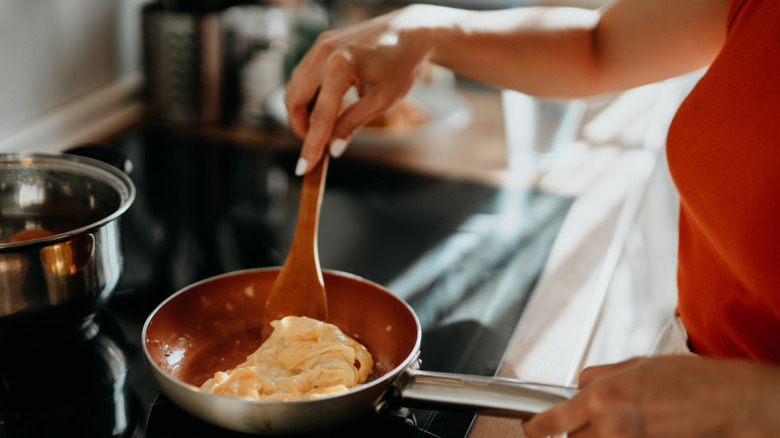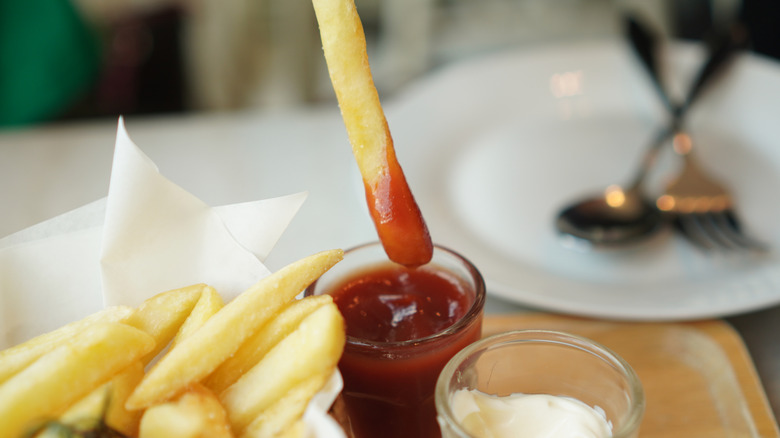The Classic American Condiment That Shines In Asian Cooking
Immigrants are a huge source of cultural richness in practically every country. When they make that long trek to a new home, they bring with them dazzling fashion, nuanced ways of life, delicious recipes, and fresh cooking techniques. They make do with what's available in a foreign land, creating fusion cuisines that marry old and new. In the United States, we're lucky to have endless fusion foods at our fingertips, and Asian American food enjoys pretty widespread popularity these days. Is it authentic in a straight-from-the-homeland sense? No, but it was made by immigrants working with the ingredients they had, so it's still authentic to the Asian American experience. That's why ketchup is the American condiment that you can find in many Asian American restaurants, dishes, or kitchens.
It may come as a surprise, but ketchup was originally quite a fancy sauce that came to England from Asia (likely Vietnam) and then gradually morphed into the red, viscous sauce we're familiar with today. Throughout this evolution, it kept two of its core components: tang and sweetness. Speaking from personal experience, Asian palates tend to love this combination. In fact, many Asian nations have their own ketchup-based dishes, like omurice, a ketchup-topped, fried rice omelet from Japan or Hong Kong spaghetti, a dish that spotlights ketchup. Given ketchup's Asian origins, is it really any wonder that immigrants immediately took to the Americanized version of this condiment and made it their own?
Ketchup is for more than just burgers and fries
In the United States, it's most common to use ketchup as a condiment alongside fatty, greasy foods like burgers, hot dogs, and onion rings. In Asian kitchens, however, it's treated as an ingredient in its own right. Ketchup is a classic addition to a Chinese comfort food that's simply called tomato egg. This is made with cut tomatoes, scrambled eggs, sugar, ketchup, and Shaoxing wine. Ketchup also features in mee goreng, a popular Indonesian dish, and Sichuan sweet-and-sour sauce. It is used to thicken sauces or soups and adds a pleasant bite of vinegar and some sugary sweetness into whatever someone's cooking up. In other words, ketchup is everywhere in Asian cooking.
While not everyone agrees that ketchup belongs on every dish, Asian American cooks have certainly found a way to make the condiment feel right at home in their kitchen cupboards. So next time you reach for the ketchup, let your imagination take the wheel. Toss some ketchup into your next stir fry, mix it into your budae jjigae, and slap a spoonful into pan-fried beef; use it for just about anything but simply topping your fries.

